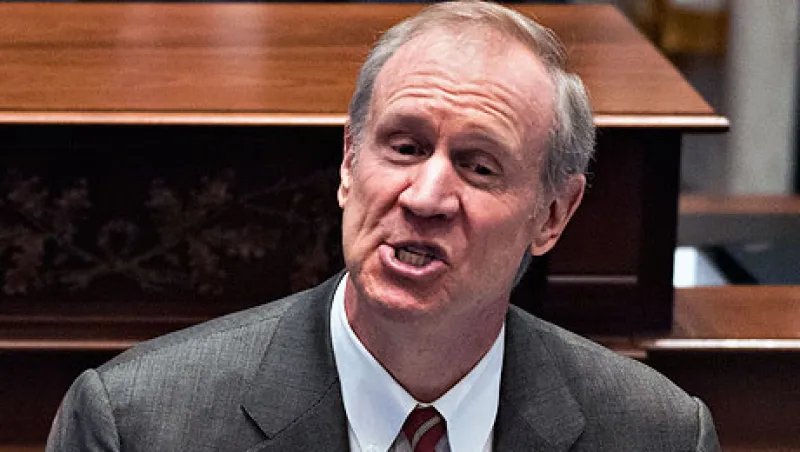In recent months, Illinois Governor Bruce Rauner has made two new appointments to the board of the state’s Teachers’ Retirement System Board of Trustees — and a source familiar with the situation says the Rauner appointees could begin pushing for big changes to the way the $46 billion pension plan operates.
In May, Illinois Governor Bruce Rauner appointed Matthew Hower to the Teachers’ Retirement System’s board, which oversees the state’s Teachers Retirement System (TRS). The previous month, Rauner — a private equity executive before his 2014 election to the governor’s office — had named Marc Levine, chair of the Illinois State Board of Investment (ISBI), to the teachers’ retirement board as well. The new appointments give Governor Rauner six seats on the 13-person board, at a time when the state’s debt is teetering just above junk bond status, in no small part because of its $119 billion pension deficit. Efforts at liability reform have been overturned by the courts, leaving the state with fewer and fewer options over how to manage the deficit. While it may be impossible for the state’s pension plans to invest their way out of such a large retirement hole, the performance — and costs — associated with these plans still matters a great deal.
To that end, Levine, a former asset-backed securities fund manager, is expected to want to review how the teachers’ pension plan is managed. Levine, the source says, could push for changes similar to those he implemented at the $17 billion ISBI since joining its board as a Rauner appointee in January 2015 and becoming chair that September.
Levine has overseen a major overhaul of that pension plan’s investment approach, transforming the portfolio from having the majority of assets actively managed by outside managers to a one that is two-thirds indexed in passive investments. In the process ISBI let go of more than 87 active managers.
Now TRS could be looking at a similar shake-up. According to its most recent annual report, TRS now allocates 21.7 percent of its portfolio to global fixed income, 18.9 percent to global equities, 16.3 percent to U.S. equities, 15.2 percent to real estate, 12 percent to private equity, 7 percent to absolute return, 6.3 percent to real return assets, and 2.6 percent to short term investments and currencies. Within the U.S. equity portfolio — a prime target for indexing given the struggles active mangers have had in trying to beat the stock market in recent years — 60.8 percent is invested with active large-cap managers and 18.5 with active small- and mid-cap managers, while the remainder is indexed. The large-cap active mangers include Acadian Asset Management, J.P. Morgan Investment Management, MFS Institutional Advisors, Robeco Boston Partners Asset Management, and T. Rowe Price Associates. On the international equity side, only 21.4 percent is in passive accounts. Active international mangers include Aberdeen Asset Management, AQR Capital Management, LSV Asset Management, and Mondrian Investment Partners.
If the Rauner appointees to decide to push for a more passive investment approach, they will have to win over one or more other members of the investment board. By statute, the chair of the TRS board is the state’s school Superintendent, Tony Smith. The other six members of the board are union-elected. The first meeting of the new board is slated for June 21st and 22nd. TRS executive director Richard Ingram did not immediately respond to an e-mail request for comment.
Like other public plans in Illinois, TRS is struggling with significant under-funding issues, with the pension plan currently standing at $71.4 billion. Many pension systems have come under criticism for paying high fees to active money mangers while struggling with large funding gaps. Indexing offers one way to reduce the management costs associated with running a pension plan.
Citing its deficits, including the pension plans’, and a continued inability on the part of the legislature to reach a solution, this month Moody’s and S&P downgraded Illinois’s credit rating to one notch above junk status. S&P warned that the state could lose its investment-grade status — an unprecedented outcome for a US state — by around July 1 if lawmakers have not made any headway on the budget and deficit.






